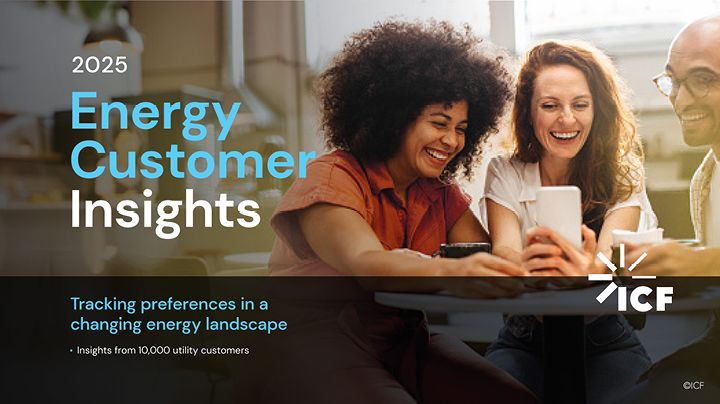
Utilities can reframe reliability to better connect with customers
Utilities, who have spent decades fortifying the grid to improve reliability, face an even tougher reality as extreme weather increases. The truth is, grid reliability is likely to be less reliable in the future.
So, how do utilities bolster reliability, as well as trust, with their customers and stakeholders? The answers come from customers themselves. They think about reliability more broadly than how utilities have traditionally defined it. If utilities pin their measures of reliability solely on SAIDI and SAFI scores, that may set them up for failure in the minds of customers.
The reliability challenge
Due to more frequent extreme weather, researchers at EPRI and the Pacific Northwest National Laboratory say the risk of hurricane-induced power outages could become 50% higher in some areas of the United States.
Hurricanes Beryl, Debby, Francine, Helene, and Milton have reminded us of our vulnerability. Millions of people lost power and hundreds lost their lives.
Add the drive to increase electrification, along with the growth of energy-hungry data centers and artificial intelligence technologies, and the result is enormous pressure on a system that may not be able to keep up.
Recognizing those challenges, some utility executives have started to think that communicating more about outage recovery speed versus reliability may be a safer promise to customers. That could be wise. But there’s more nuance to consider.
Based on ICF’s utility customer research and decades of deep industry knowledge, we have developed a framework that outlines three levels of reliability from a customer perspective. It’s a roadmap to the minds of utility customers and a plan to reshape how to communicate reliability between utilities and their customers.
Three levels of reliability with utility customers


Level 1: When asked about reliability, customers agree keeping the power on is critically important. While utilities spend billions of dollars and enormous resources doing that, customers believe that’s a minimum expectation.
Keeping the power on and improving grid resilience is “Operational reliability,” a foundational responsibility. Many utilities stop their thinking about reliability here. But customers expect more.
Level 2: The second level of reliability is what ICF identifies as “Human-centered reliability” where the utility’s behaviors, services, and people meet both the emotional and rational needs of customers.
When ICF interviewed utility customers and asked what made their utility most reliable, they cited a variety of needs and expectations, including:
- Ease of reaching customer service through phone, text, or mobile app.
- Finding solutions when they struggled to pay their bill.
- Good communication about power outage recovery times.
- Pleasant and effective service from utility employees.
- Showing up for the community in times of need.
ICF behavioral scientist Andrea Yetzer, Ph.D. says responsiveness is fundamental to human reliability—we believe people are reliable when they are responsive to our needs. So, customers are not only expecting the power on. They are really asking a simple question. “Will you be there when I need you?”

Customers want to know, “Will you be there when I need you?”
Level 3: ICF identifies the third level of reliability as “Reciprocal reliability,” a rapidly approaching future-state where the utility and its customers depend on each other. As energy resources are more distributed on the grid, customers are being asked for partnership.
Reciprocal reliability is not just a mechanical operation
Some utilities are starting to seek permission to remotely control customer smart thermostats, to dial back energy usage during peak demand. Some utilities are even asking customers to share their battery-stored energy to hold off brownouts when power generation and distribution can’t keep up.
The challenge facing utilities is that reciprocal reliability should not be viewed simply as a mechanical operation to be engineered. There’s an essential human component that will drive that reality.
According to ICF’s survey of 10,000 utility customers, trust is the critical element. The data shows, those customers who have a high level of trust in their utility are about 25% more comfortable with their utility managing their home energy use.

Key utility customer insights
As utility executives navigate the new normal of more severe weather and less grid stability, they have the opportunity to reframe reliability. Yes, continue to focus on grid resilience and improvements. However, don’t stop there. Seize the opportunity to focus more on utility services and employees who offer solutions. That measure of human responsiveness is often how utility customers define what it means to be reliable.
When utilities successfully fulfill that second level of reliability is when they build trust. It’s only then that they can achieve more widespread reciprocal reliability, the pinnacle of a trusted utility-customer relationship.